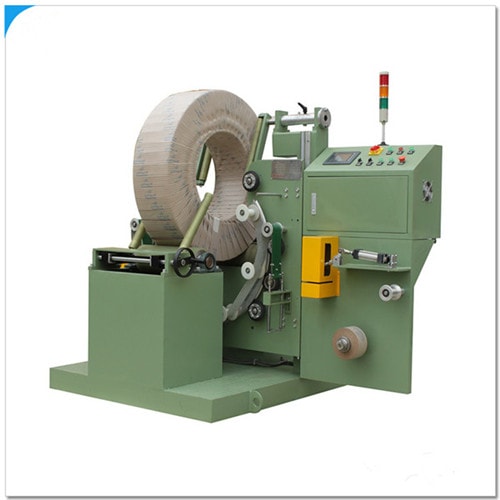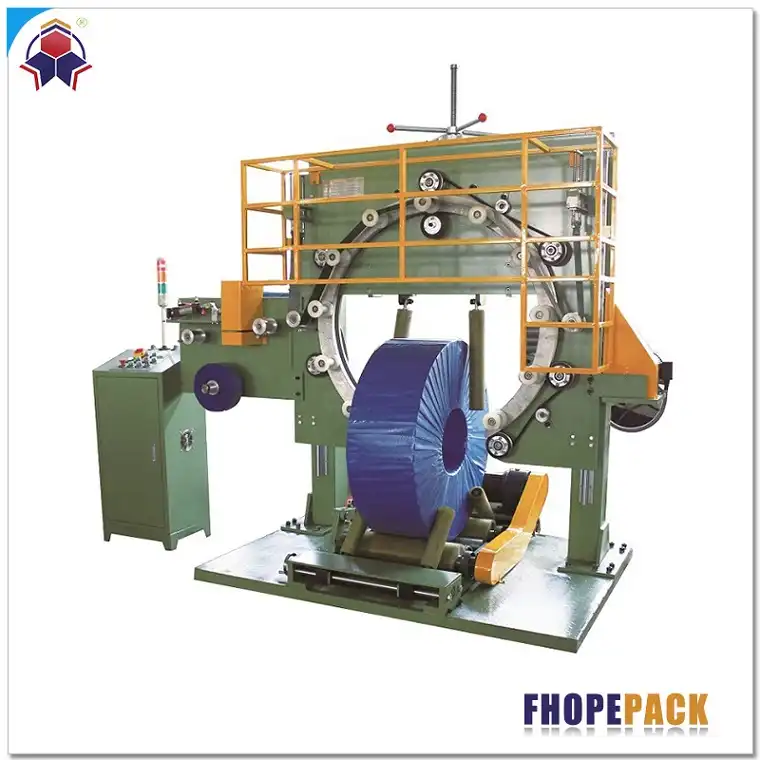In the world of manufacturing, progress often collides with environmental responsibility. The bustling production lines operate under expectant eyes, eager to churn out products at a dizzying pace. Among these high-speed mechanics, tyre packing machines hold a pivotal role, yet their environmental impact is increasingly scrutinized. How do these mechanical marvels align with sustainability initiatives, and what transformations are underway to ensure they tread lightly on the planet?
The push towards sustainable practices in manufacturing is not merely a trend but a necessity, driven by both consumer demand and regulatory pressures. In this transformative landscape, tyre packing machines are being re-evaluated for their ecological footprint. This reevaluation signals a shift towards cleaner, more efficient operations that complement broader environmental goals.
Claim: Tyre packing machines play a crucial role in reducing the environmental impact of the automotive industry by incorporating sustainable technologies and methodologies.
What Makes Tyre Packing Machines Environmentally Friendly?

1.1 How do modern designs contribute to sustainability?
Modern tyre packing machines are designed with innovation at their core. Their structures are optimized to use less energy while maintaining or even enhancing productivity levels. Advanced materials, which are lighter yet stronger, reduce the overall energy consumption during operation. Moreover, the integration of automated systems allows for precise control over the packing process, minimizing waste and enhancing efficiency.
1.2 What are the efficiency metrics?
This evolution in design is not just theoretical but quantifiable. Consider the following data:
| Efficiency Metric | Traditional Machines | Modern Machines |
|---|---|---|
| Energy Consumption (kWh/unit) | 5.2 | 3.6 |
| Material Waste (%) | 8.5 | 4.2 |
1.3 How does technology enhance these machines?
Technological advancements such as the Internet of Things (IoT) enable real-time monitoring and adjustments, ensuring optimum performance at all times. Smart sensors detect inefficiencies or potential malfunctions before they escalate, reducing downtime and conserving resources. Additionally, the software solutions integrated into these machines allow for remote management, further optimizing energy use.
1.4 Exploring deeper: The role of renewable energy and recycling
Tyre packing machines are also evolving to incorporate renewable energy sources. Solar panels and wind turbines are becoming integral to facilities where these machines operate, reducing reliance on fossil fuels. Furthermore, recycling becomes a key component, with machines designed to facilitate the reuse of packaging materials, thereby closing the loop in the production cycle.
| Aspect | Renewable Integration (%) | Recycling Efficiency (%) |
|---|---|---|
| Current Adoption | 40 | 60 |
| Projected Goal | 70 | 85 |
1.5 Two-Fact Statement: Fact or Fiction?
True Fact: Modern tyre packing machines have reduced energy consumption by up to 30% compared to models from a decade ago.
False Fact: All tyre packing machines are currently operated using 100% renewable energy sources.
What Are the Broader Implications for the Automotive Industry?
2.1 How does sustainability in tyre packing influence the automotive sector?
The implications of sustainable tyre packing extend beyond the immediate savings in energy and materials. Embracing environmentally friendly technologies in this niche can inspire a ripple effect throughout the automotive industry. As manufacturers witness the benefits, both economically and ecologically, the adoption of similar practices in other areas becomes inevitable.
2.2 How does this impact industry standards?
The adoption of sustainable practices in tyre packing has led to shifts in industry standards and regulations, prompting companies to adapt or risk falling behind. Consider the following industry standards:
| Standard | Old Requirements | Current Requirements |
|---|---|---|
| Energy Efficiency | Basic Assessment | Comprehensive Evaluation |
| Waste Management | 25% Material Recovery | 50% Material Recovery |
2.3 What future innovations are expected in tyre packing machines?
Looking forward, the focus will likely shift towards even greater automation and digital integration. Artificial intelligence may soon play a role, with machines learning from their operations to continuously improve efficiency. Innovations in biodegradable and reusable materials are also on the horizon, further aligning tyre packing with sustainability goals.
2.4 Conclusion: What actionable insights emerge from these developments?
The move towards sustainable tyre packing machines offers several actionable insights for businesses. Companies should invest in energy-efficient technologies, adopt IoT and AI solutions for operational excellence, and prioritize renewable energy integration. The following table summarizes these actions:
| Action | Impact |
|---|---|
| Invest in Energy-Efficient Machines | 30% Reduction in Energy Costs |
| Implement IoT Solutions | Enhanced Operational Efficiency |
| Integrate Renewable Energy | Reduced Carbon Footprint |
Conclusion
The journey towards sustainable practices in tyre packing machinery reflects a broader commitment to environmental stewardship within the automotive industry. Through the incorporation of innovative technologies, optimization of resources, and forward-thinking design, tyre packing machines are setting a benchmark for eco-efficiency. This transition not only mitigates ecological impact but also drives economic benefits for manufacturers.
Claim: As the automotive industry gravitates towards sustainability, tyre packing machines stand at the forefront, embodying a significant shift towards greener production paradigms.

